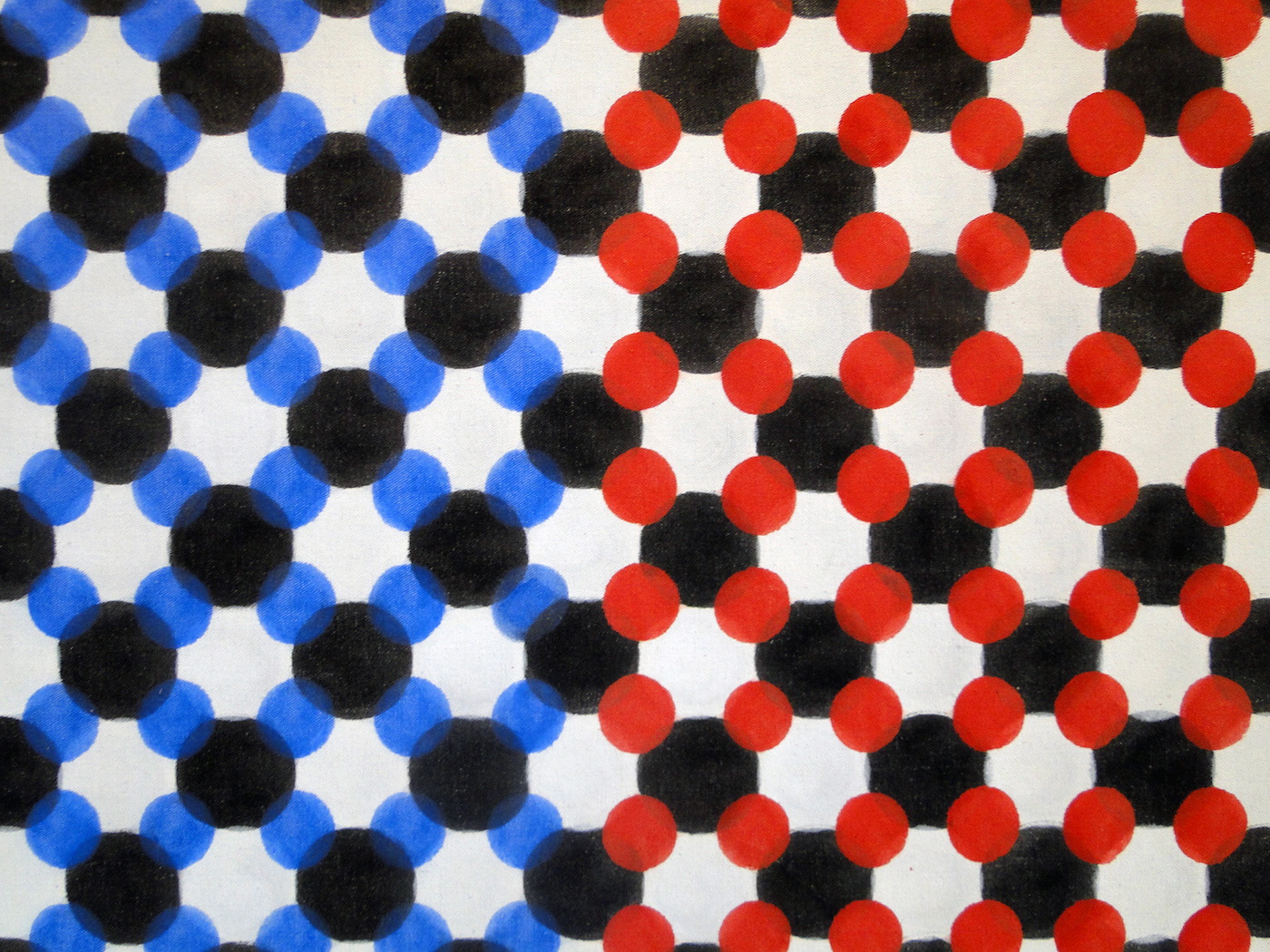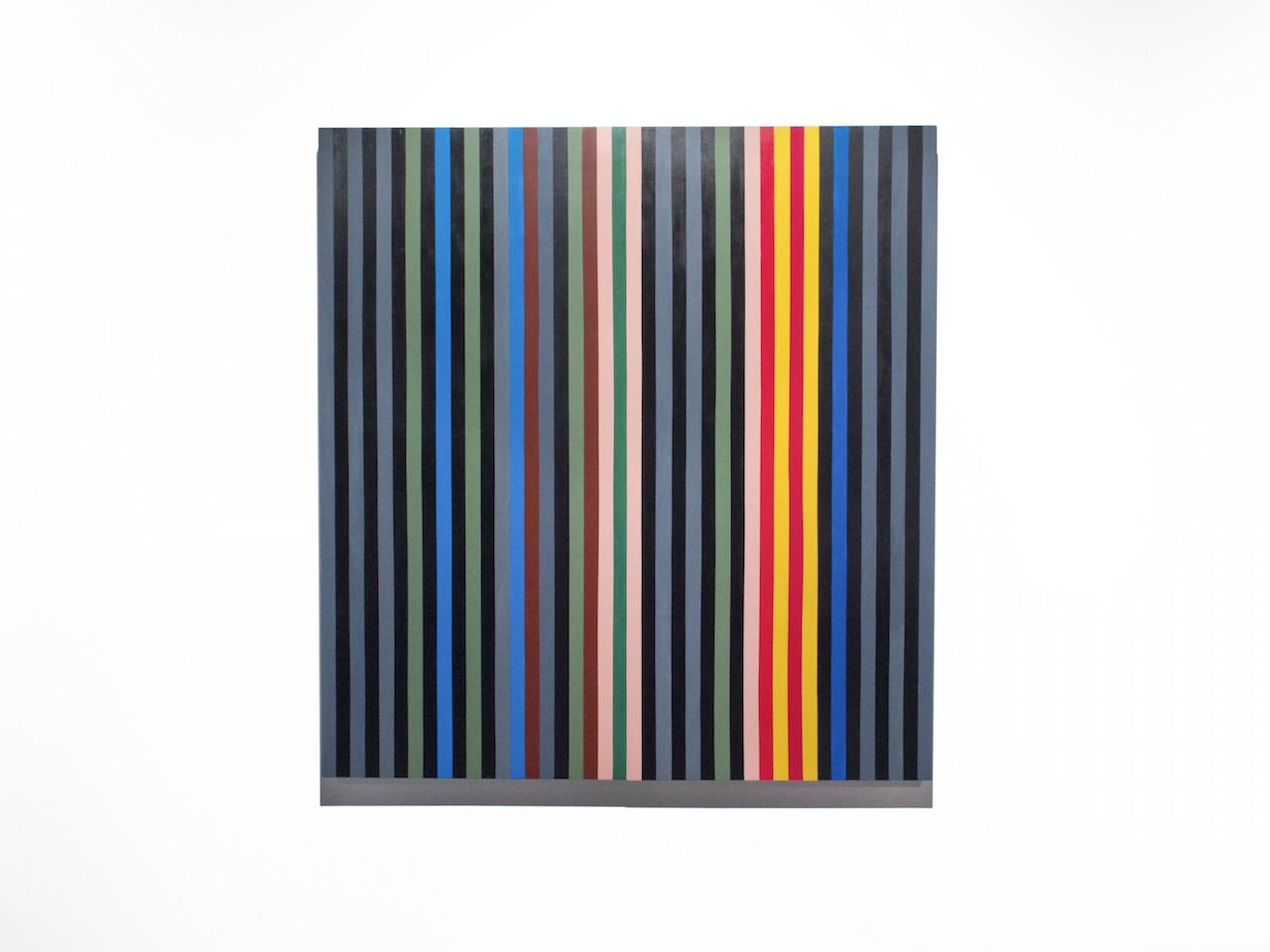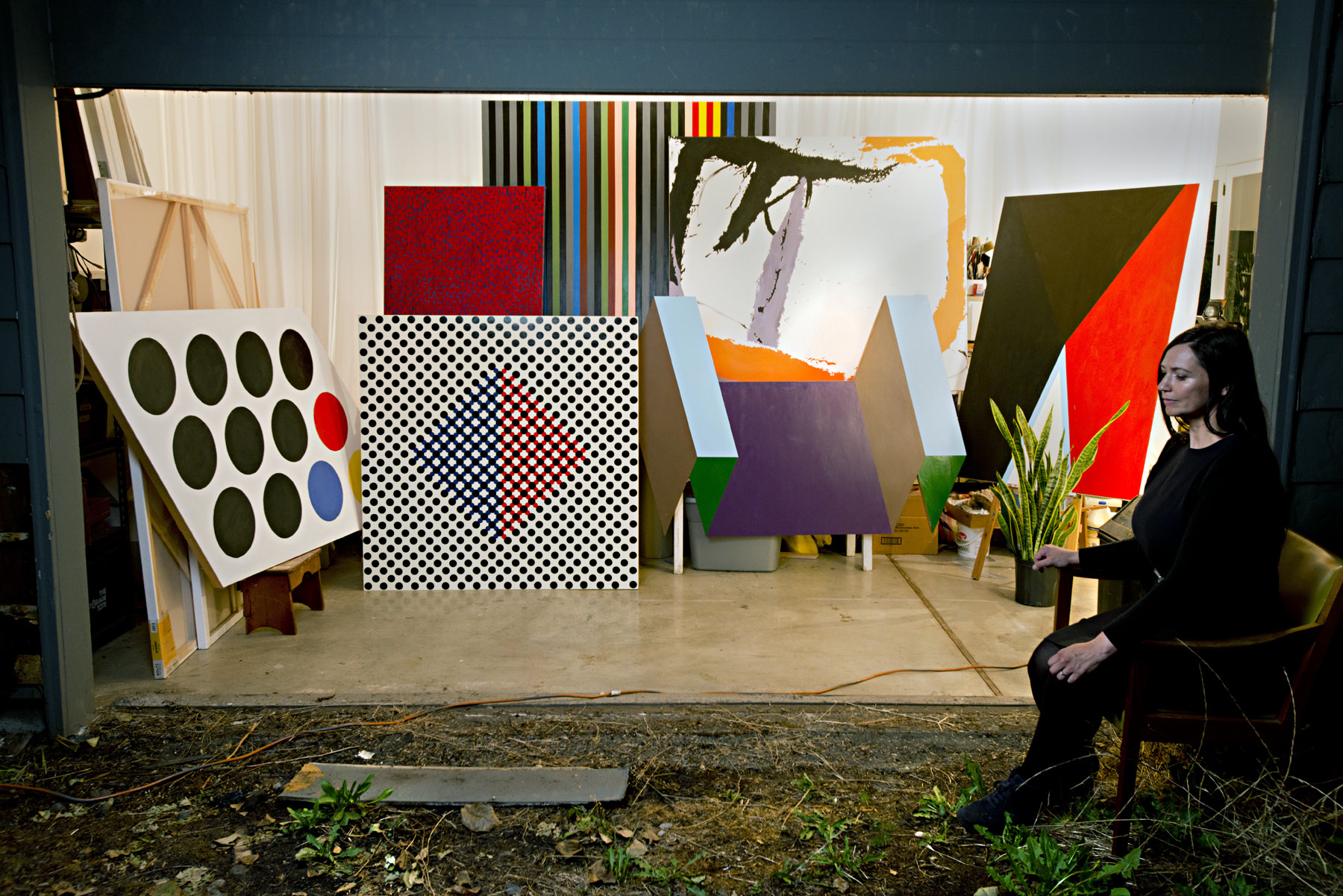The CIA’s abstract art collection isn’t as “secret” as a series of articles made it seem—but it’s more politically significant than it appears, and there are still unanswered questions. Here, photographs of the collection are accessible to the public for the first time.

Thomas Downing, “Center Grid” (ca. 1960), detail (Image by the author for Hyperallergic)
WASHINGTON, DC — The magazine selection in the visitors’ waiting room at the George Bush Center for Intelligence has a pretty narrow focus: Atop a small wood table sit copies of Hunting Magazine, American Rifleman (cover story: “A Tribute to Antonin Scalia”), and Outdoor Life: The Meat Issue. Near the table, bulletproof glass shields a reception desk. Colonial-era maps of Langley, Virginia hang on the walls next to lists of prohibited things, which include weapons, cameras, cell phones, and “disturbances.” On a rainy Saturday morning, I sat flipping through “The Meat Issue,” waiting to tour the CIA’s collection of abstract art.
In 1968, notorious art collector Vincent Melzac — who was also a catfish farm owner, salon chain magnate, Arabian race horse breeder, and former Corcoran Gallery chief — loaned a series of abstract paintings to the CIA. All were by artists affiliated with the Washington Color School, a post-war movement based in DC, known for their stripes, polka dots, and color fields on canvas. In 1988, the agency purchased 11 of these paintings from Melzac. Eighteen more paintings were loaned in 2000 and then returned to the Melzac Estate last year. The original 11 paintings still hang on the walls of the agency’s headquarters, “represent[ing] an elemental approach to art [and] a swashbuckling donor,” according to a brief blurb on the agency’s website. What these paintings represent about the CIA’s relationship to the art world, though, is more complicated. On these walls, the intersection between US art and politics is especially busy.

Joby Barron, “Gene Davis, Black Rhythm” (2016)
The Melzac Collection makes up only a small chunk of the CIA’s eclectic decor. One hallway features the eerie “Intelligence Art Collection,” which “celebrates historical accomplishments in intelligence.” Here, paintings of warplanes resemble action movie concept art, while other works look like Norman Rockwell painted a child’s fantasy about becoming a spy. Official portraits of past CIA directors line another wall. The running theme of most art in the headquarters is that it’s somehow about the CIA. The exception, at first glance, would seem to be the Melzac Collection — these are just a bunch of stripes and polka dots, right? But in historical context, the paintings seem not so different, after all, from those in the Intelligence Art Collection, in that they indirectly “celebrate historical accomplishments in intelligence”— in this case, the CIA’s use of abstract art as a propagandistic Cold War weapon.
In December 2015, a number of media outlets, including Hyperallergic, published articles alleging that the CIA keeps the Melzac Collection “secret.” Headlines in SFGate, CNN, Smithsonian Magazine, Artnet News, and elsewhere offered variations on the same question: “Why Does the CIA Keep Its Art Collection Secret?”

Artist Joby Barron with selections from her recreation of the Melzac Collection held by the CIA (2015) (image by James Rexroad)
These articles focused on a project by Oregonian artist Joby Barron, called “Acres of Walls.” The project grew out of Barron’s interest in the CIA’s covert promotion of Abstract Expressionism as propaganda during the Cold War. Long held as rumor, it’s now well known that in the 1950s and ‘60s, the CIA helped fund and promote the work of unwitting American Abstract Expressionists — like Jackson Pollock and Willem de Kooning — around the world. Why? Their anarchic artwork was seen as evidence of the extraordinary scope of freedom of expression in the United States. Led by front organizations like the Congress for Cultural Freedom, these efforts were part of the CIA’s Cold War strategy of promoting the non-communist left. In the Soviet Union, it was implied, such avant-garde artists would’ve been thrown in the Lubyanka.
Seven years ago, Barron saw a photograph by artist Taryn Simon of two abstract paintings in a CIA hallway. She began researching the Melzac Collection. Documentation was scarce, she discovered: The CIA’s website has only short blurbs about a few artworks. The only image available online pictured Gene Davis’s “Black Rhythm.”...MUCH MORE

Alma Thomas, “Mars Reflection” (1972) (Image by the author for Hyperallergic)
...Why does the CIA have an abstract art collection in the first place? Apparently, it’s not just to brighten up vast empty walls. “[The paintings] are used for training purposes,” Reams said. “We’ll have some of our guys and gals come down here and do a critical analysis of the paintings. Say you’ve got to analyze this big, heavy duty ISIL problem over here — maybe if you come look at the painting, it’ll help you think about how to solve the ISIL problem creatively.”
It sounded like a Homeland parody — Agent Carrie Mathison having a wobbly-chinned eureka moment while gawking at a stripy canvas. How, exactly, this art-related training had played out in the past was “classified information.”...